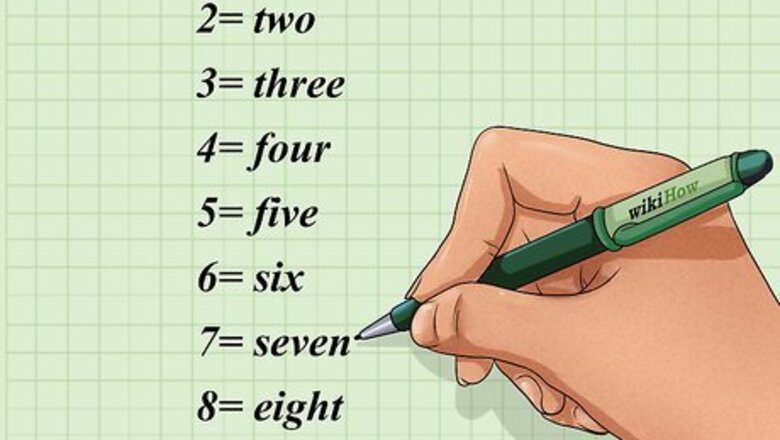
views
Writing 1 to 999
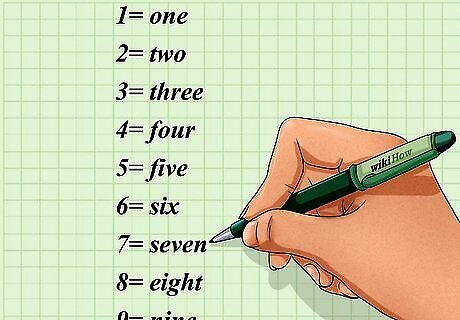
Learn to write numbers from 1 to 9. This is where it all starts. Learn these, and the rest gets much easier: 1 = one 2 = two 3 = three 4 = four 5 = five 6 = six 7 = seven 8 = eight 9 = nine
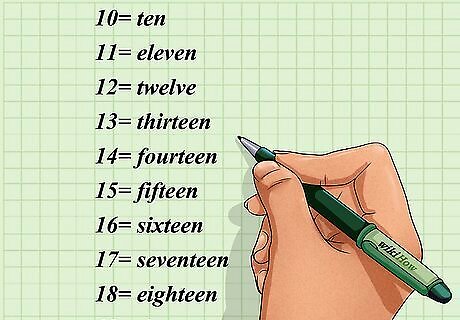
Write numbers from 10 to 19. Do you see how many of them look just like the numbers above, plus "teen" at the end? "Sixteen" (16) just means "six and ten" (6 + 10). 10 = ten 11 = eleven 12 = twelve 13 = thirteen 14 = fourteen 15 = fifteen 16 = sixteen 17 = seventeen 18 = eighteen 19 = nineteen
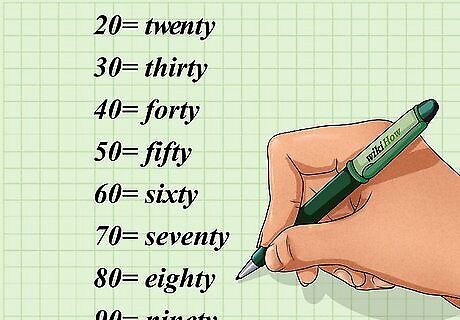
Count in tens from 20 to 90. Here's how to write 20, 30, 40, and so on all the way to 100. You can recognize these numbers because they end in "ty" except 100). 20 = twenty 30 = thirty 40 = forty 50 = fifty 60 = sixty 70 = seventy 80 = eighty 90 = ninety

Combine words to write more numbers. Now you can write any number from 1 to 100. Let's see how it works for the number 42: 42 is written with two numbers: 4 2. 2 is in the ones place, so this just equals 2. Write this as two. 4 is in the tens place, so this is actually 40. Write this as forty. Write the two parts together: forty-two. Don't forget the - sign between them.

Count by hundreds. This part's easy if you remember the basics. Just write the number as usual and add "hundred:" 100 = one hundred 200 = two hundred 300 = three hundred (and so on)
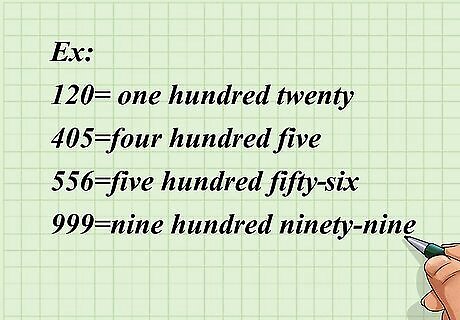
Write any number from 100 to 999. Just write the hundreds place, then the rest of the number. You don't need to write "and" or anything else between them. Here are some examples: 120 = one hundred twenty 405 = four hundred five 556 = five hundred fifty-six 999 = nine hundred ninety-nine
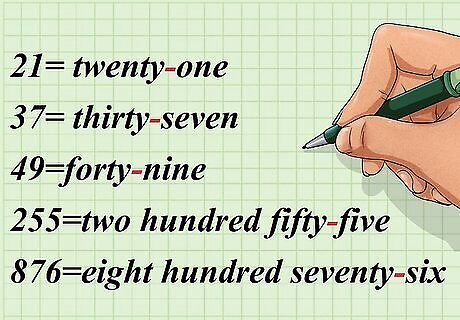
Test yourself. Try writing a few numbers as words. Work on these, then highlight the space after the = sign to see if you're right: 21 = twenty-one 37 = thirty-seven 49 = forty-nine 255 = two hundred fifty-five 876 = eight hundred seventy-six
Writing Long Numbers

Understand place values. We can tell what each digit in a number means based on where it is. Here's what the first 9 place values are called: 1 → the ones place. 10 → the tens place. 100 → the hundreds place. 1,000 → the thousands place. 10,000 → the ten thousands place. 100,000 → the hundred thousands place. 1000,000 → the millions place. 10,000,000 → the ten millions place. 100,000,000 → the hundred millions place.
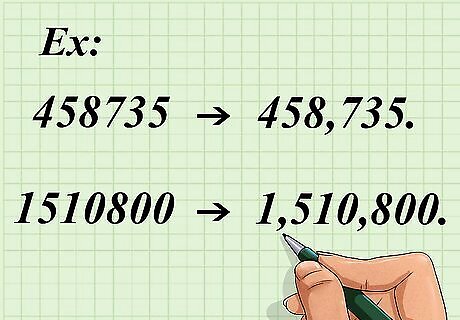
Add commas to long numbers. Start from the right side of the number, at the ones place. Count three digits to the left, then add a comma. Keep separating the number in groups of three. For example, turn 458735 into 458,735. Write 1510800 as 1,510,800. You can use a period instead if that's how people in your country write numbers.
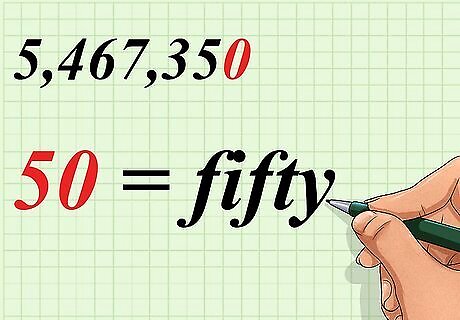
Write the last two digits. Look at the two digits at the end of the number. This part is just like writing a normal two-digit number. 5,467,350 looks hard, but don't worry. Start with just the 50 at the end. Write this as fifty.

Write the hundreds place. The next digit is the hundreds place. This is an easy one. Just write the number in that place, then add the word "hundred." Write this in front of your number. In 5,467,350, the 3 is the hundreds place. Write this as 'three hundred. Now we have 'three hundred fifty.

Look at the next chunk of three. You just wrote the hundreds, tens, and ones place. The next three numbers are the thousands "chunk." These are the hundred thousands, ten thousands, and one thousands. Write these the same way, then add the word "thousand." In 5,467,350, the 467 is the thousands chunk. Write the 4 as four hundred. Write the 67 as sixty-seven. Write the whole chunk as four hundred sixty-seven thousand. Now we have four hundred sixty-seven thousand, three hundred fifty.
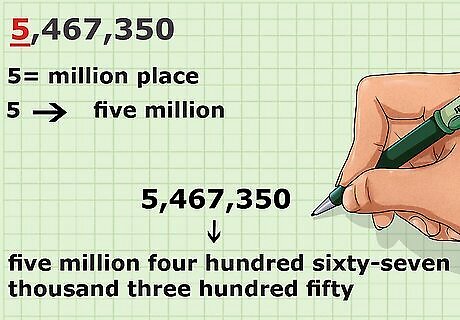
Do the same for the millions. The next chunk of three numbers are the millions. These are the hundred millions, ten millions, and one millions. This is just the same as before, but with millions at the end. In 5,467,350, we only have a 5 in the millions place. Write this as five million. Finish writing the number: five million, four hundred sixty-seven thousand, three hundred fifty.










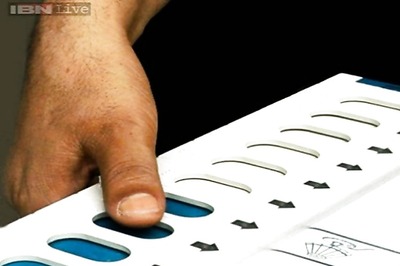






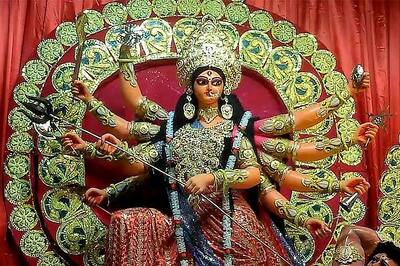

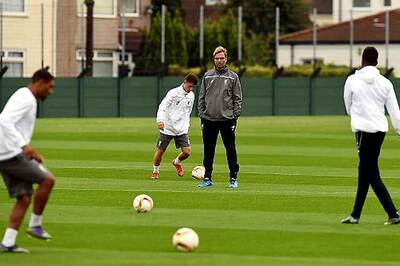
Comments
0 comment